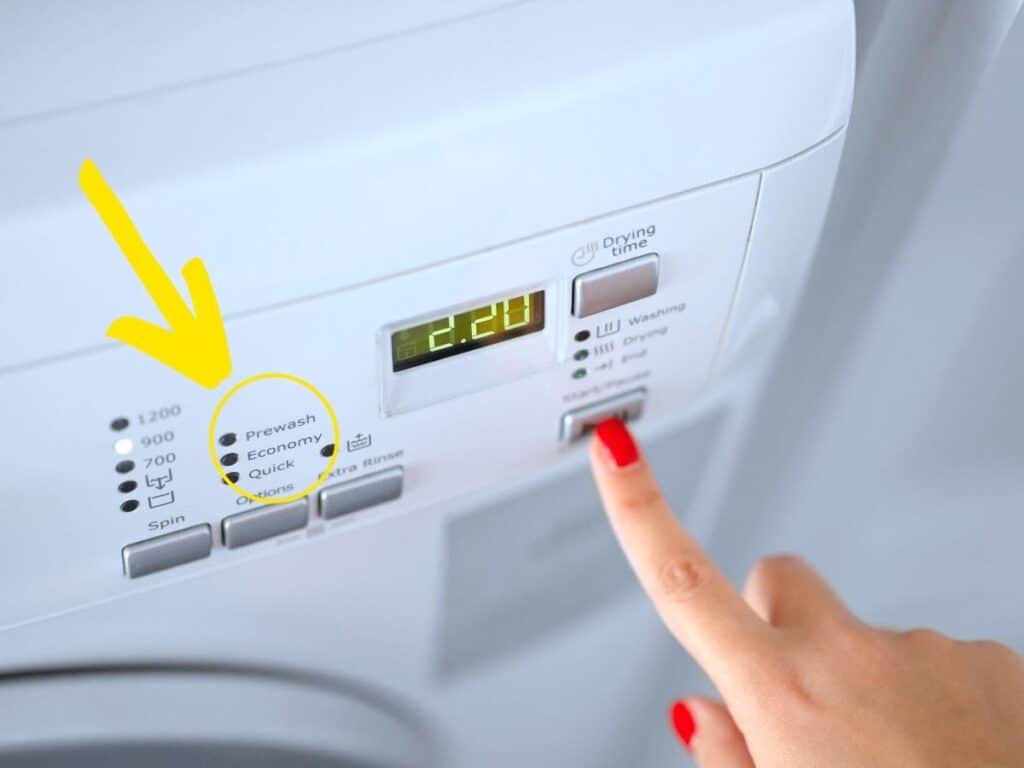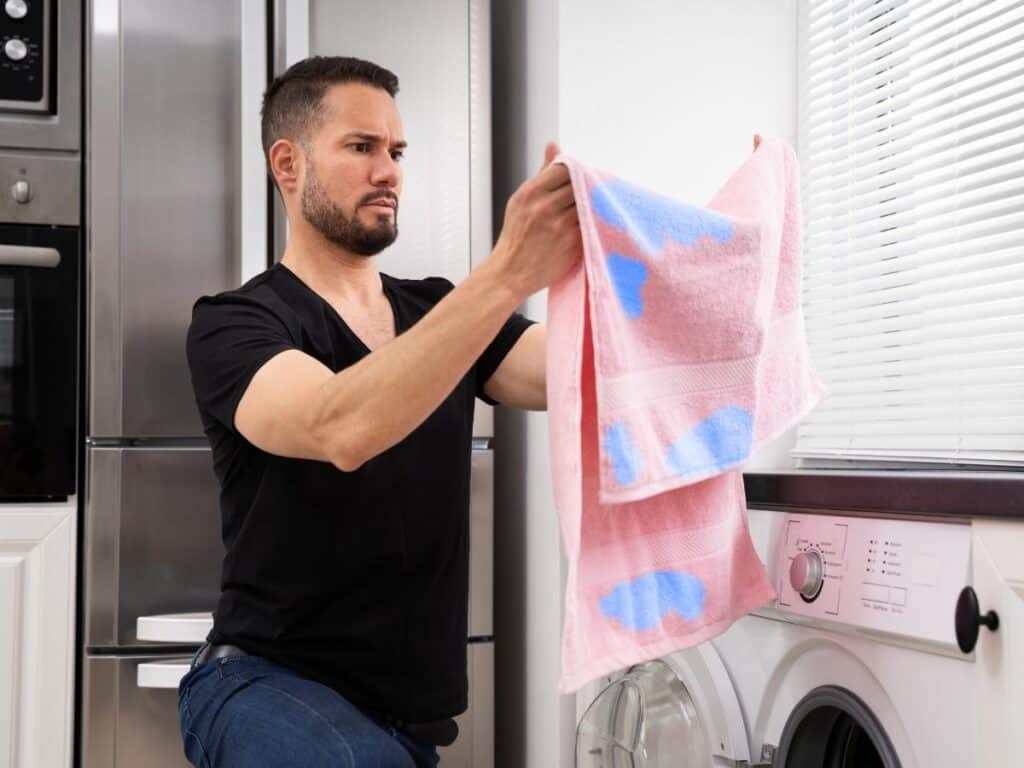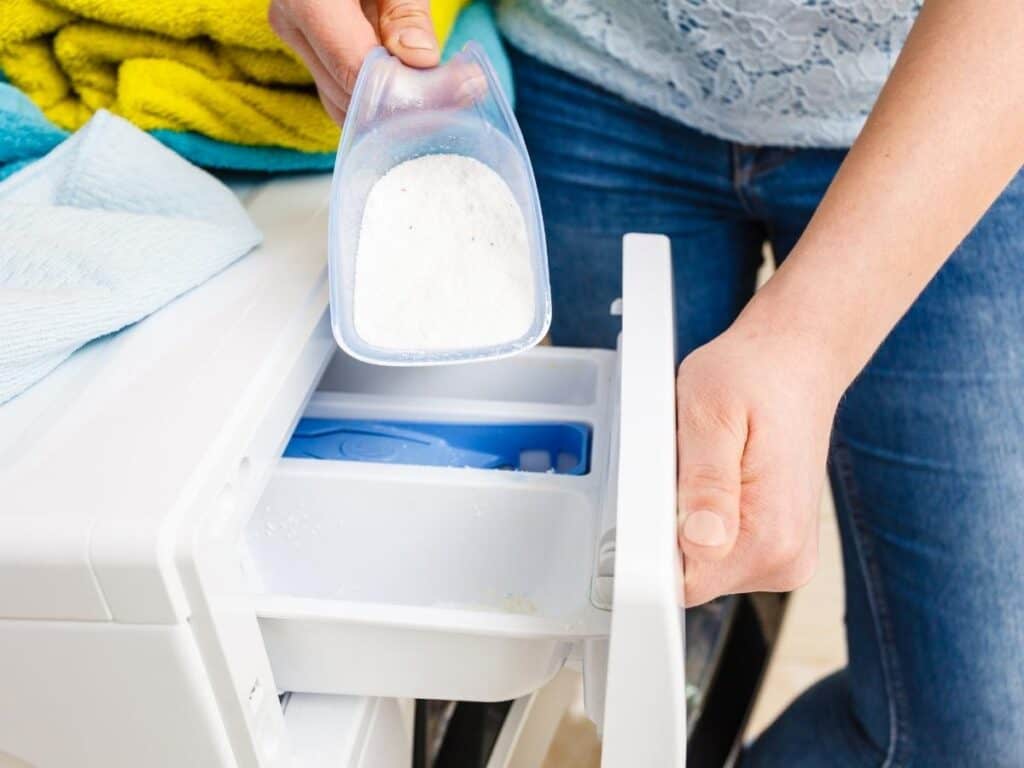Modern washing machines come equipped with multiple unique features. The options range from specialized settings for waterproof items, bedding, towels, and allergens to the prewash cycle. Most cycle settings are straightforward, but the prewash feature might be confusing.
Prewash in a washing machine is a short, cold water wash cycle that you run before the regular process. It’s for excessively soiled items or those with a care label that recommends prewashing. The prewash loosens dirt and stains and gives your clothes an initial wash before the regular cycle starts.
If you’re learning about prewash, you might want to know more about how the cycle works. You may be wondering whether the prewash cycle uses detergent or what you’ll need to add in its compartment. In this article, I’ll cover all of these topics and more, including what to do if you accidentally put detergent in the prewash.
Is Prewash Necessary?
Prewash is necessary if your laundry includes heavily soiled items. These include clothes soiled from construction jobs, yard work, sports games, and mud runs. Prewash also works wonders if your family has toddlers or babies, especially if you need to clean cloth diapers.

The prewash cycle replaces manual laundry, and it takes approximately three minutes. Its short cycle might leave you wondering whether going through the trouble is even worth it, but it can transform the cleanliness of your clothes, linens, and towels and save you time.
It’ll clean off the worst dirt and provide a headstart for the regular wash cycle to perform a more thorough cleaning. It’ll remove dirt, urine, odors, food, and muck. It also removes oil or grease, sweat, wine, food, or industrial chemicals.
The regular wash cycle will clean and disinfect your clothes and leave them smelling fresh.

The prewash function isn’t compatible with speed wash or express modes. Usually, if you want to wash something quickly, it’s not dirty enough to require a prewash.
Also, most machines don’t have prewash for the Handwash/Delicates, Wool, and Rinse and Spin cycles. For washers that support this function, a prewash is an additional option to turn on and off.
Check out my list of 13 Laundry Detergent Alternatives (That Actually Works)
Does Prewash Cycle Use Detergent?
Prewash cycle uses detergent. Although not necessary, adding detergent or stain remover to your prewash will allow it to operate with maximum effectiveness. You can use a prewash laundry detergent or the same detergent you use for a regular wash.
Prewash is for particularly soiled or stained clothing and can help you get rid of the worst grime, stains, and dirt before the main wash. It’s like a separate starter wash that helps your clothes come out smelling fresh.
When selecting a prewash cycle, you must put detergent in both dispenser compartments. The prewash detergent compartment is the first tray labeled ‘I’ or ‘1’ while ‘II’ or ‘2’ is for a regular wash. The third compartment with a star or a flower is for fabric softener.
Usually, soiled clothes benefit more from water than from detergent. Therefore, you don’t need excessive amounts of detergent for the prewash.
Too much detergent will not only be a waste of money but also bad for your clothes and washer. Your washing machine will struggle with rinsing off the excess soap and leave your clothes heavy and residue-ridden.
Your clothes will still get a regular wash, so there’s no need for extra detergent. Conversely, using less detergent than ideal will leave your clothes dirty and stained. You’ll need to use the same amount of detergent you would for a full load in a normal wash cycle.
Be sure to use a high-efficiency powder detergent in your prewash dispenser. You can check the packaging for the appropriate measurement. However, if your washer has SmartDispenseTM technology, it’ll dispense the perfect amount for the size of your load.
Learn why your clothes are still smelly after you washed them.

What Should You Put in the Prewash Compartment?
You should put detergent in the prewash compartment and starch when necessary. You can use either powder or liquid detergent, but the tray designs work better with powders. Liquids slide down the tube, and the compartment empties when the detergent reaches the main loop.
The prewash cycle is quick; therefore, liquid detergent works better for clothes that don’t need a prewash.
You can’t add bleach to your prewash, even if it’s a non-chlorinated all-fabric bleach. Bleach whitens your clothes and boosts the performance of regular detergents, but a prewash will deactivate it before it does its job.
Adding specific stain fighters like enzymes to your wash will help remove tough protein stains like blood. However, you can’t add them to your prewash because the cycle will kill the enzymes before they act on your soiled laundry.
Accidentally Put Detergent in Prewash
A prewash cycle is like an extra rinse when your laundry is extremely soiled but with the additional benefit of using detergent.
If you accidentally put detergent in your prewash, don’t worry. Select prewash and run your machine. You must select prewash before pressing the Start pad. Your washing machine will complete the prewash cycle and proceed to the normal wash process without damaging your clothes.
Prewash fills the tub with water, agitates, then spins the water out. Once complete, the tub fills with fresh water, and the machine starts the regular wash cycle.
Tap here to learn if powder detergent is bad for your washing machine.
How To Run a Prewash Cycle
Every washing machine model has a unique control panel and settings. To get the most accurate set of instructions, you need to refer to your manufacturer’s manual. However, the steps below are a basic approach that applies to most washing machine models:
- Load the washer with the dirty clothes.
- Add the correct quantity of soap to the detergent and prewash compartments.
- Select the necessary wash cycle, for example, heavy, regular, bedding, or towels.
- Close the lid, then press start.
- Prewash will run, and the primary process will automatically start after the prewash cycle ends.
Conclusion
Prewash helps to get the worst dirt off your heavily soiled laundry items. It allows the regular wash cycle to get all your clothes clean and fresh. Next time you have an especially dirty load of laundry, use your prewash cycle and enjoy your clothes’ extra cleanness and freshness after taking them out.
I’ve created a comprehensive guide on how to use all the settings on your washing machine that may interest you to read next.

I’m an expert wardrobe organizer and a bit of a clean freak. I created this website and its YouTube channel to share practical guides about laundry and organizing. My teachings have been featured in multiple large news publications, and I’ve self-published two wardrobe organizing books and an entire course on the subject.

